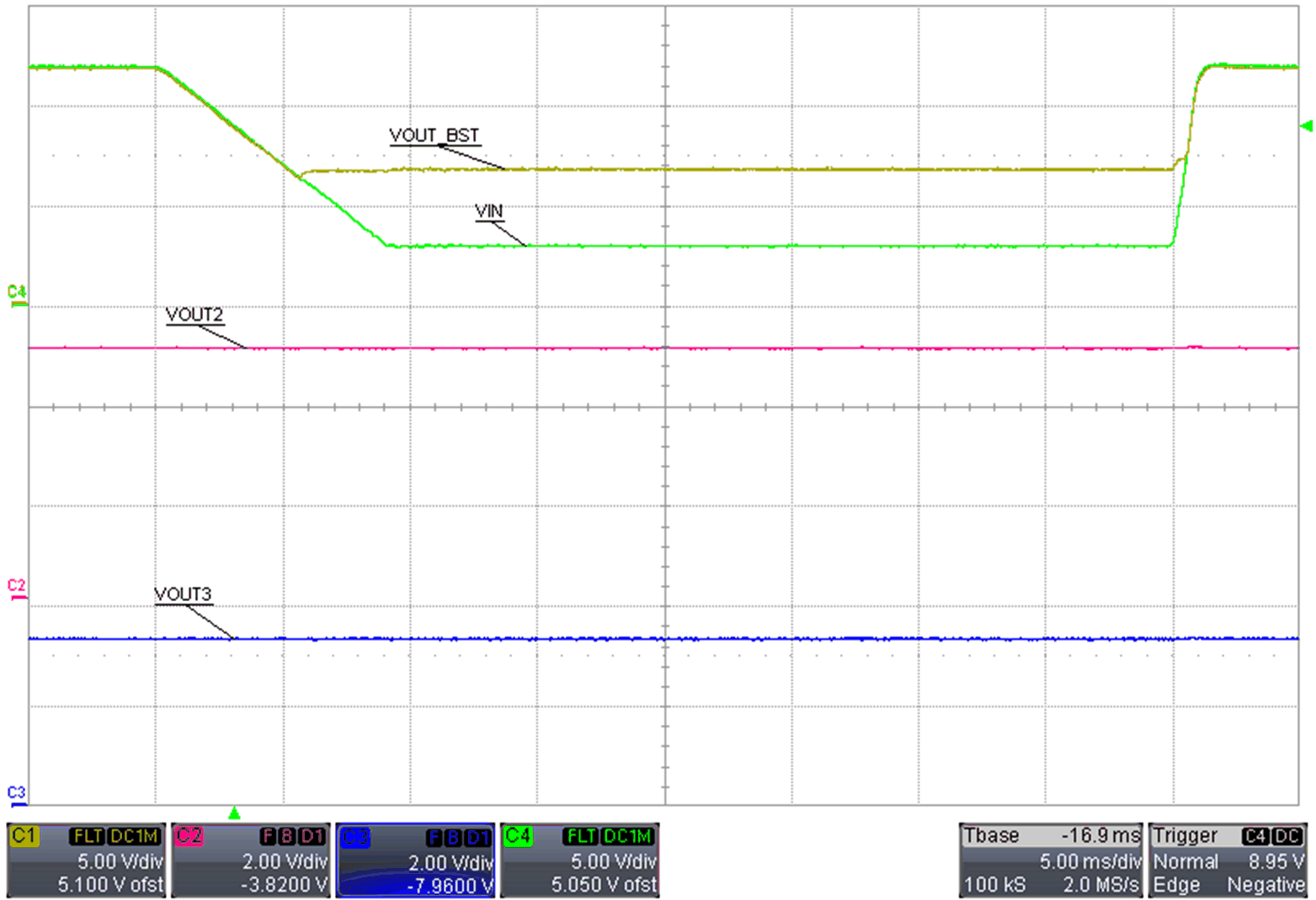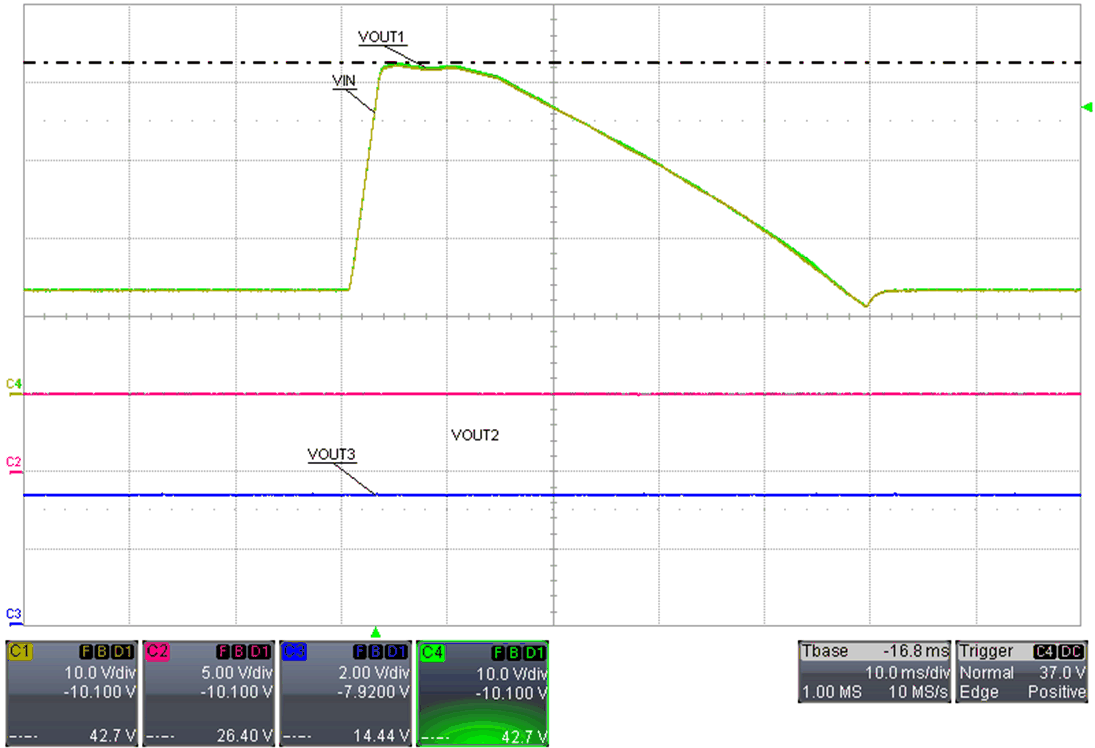SLVUBZ2A September 2020 – December 2020 LM5127-Q1
5.5 Line Transient Responses
Section 5.5 presents voltage transients on the input voltage rail (VCH1A). In Figure 5-21 and Figure 5-22, all three channels are enabled, channel 2 is loaded at 5 A and channel 3 is loaded as 7 A.
 Figure 5-21 Cold-Crank Response to
VIN = 3 V, IOUT2 = 5 A, IOUT3 = 7 A
Figure 5-21 Cold-Crank Response to
VIN = 3 V, IOUT2 = 5 A, IOUT3 = 7 A Figure 5-22 Load Dump Response to VIN
= 42 V, IOUT2 = 5 A, IOUT3 = 7 A
Figure 5-22 Load Dump Response to VIN
= 42 V, IOUT2 = 5 A, IOUT3 = 7 A